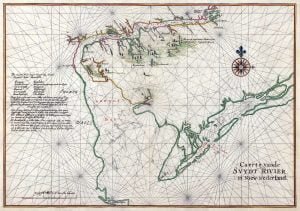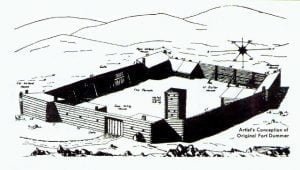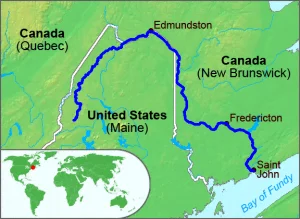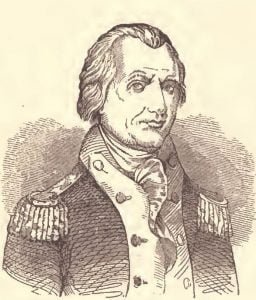Map of Zwaanendael
Nautical chart of Zwaanendael (“Swanendael”) and Godyn’s Bay in New Netherland. Zwaanendael was a patroonship founded by Samuel Godyn, a director of the Dutch West India Company, in 1629. Godyn made his land claim to the West India Company under jurisdiction of the Charter of Freedoms and Exemptions. After a short time, the initial 32 inhabitants were murdered by local Indians and Godyn sold his land back to the West India Company. The West India Company kept the names of the local area, including Godyn’s Bay, which eventually became Delaware Bay. The text in Dutch at left side of the … Read more







